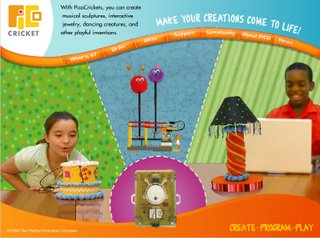 It's everywhere around me these days - every elementary and middle schooler at Aditi, where I spend a day every week, is itching (pun most certainly intended) to create a fun project on Scratch - the exciting new programming environment that has emerged from MIT Media Lab (and can be downloaded for free). I have blogged about Scratch here before, and of course am a huge fan of the tool myself, so it's great to see the current buzz on Scratch these days.
It's everywhere around me these days - every elementary and middle schooler at Aditi, where I spend a day every week, is itching (pun most certainly intended) to create a fun project on Scratch - the exciting new programming environment that has emerged from MIT Media Lab (and can be downloaded for free). I have blogged about Scratch here before, and of course am a huge fan of the tool myself, so it's great to see the current buzz on Scratch these days.I had the pleasure of watching some grade 4 students yesterday proudly present their "Stories of Invertebrates" created in Scratch as part of a Science unit. I offered them some useful suggestions to help them make their stories even better, and also suggested to the teacher to create a class account on the Scratch community website and upload those wonderful creations there. The kids are excited at the thought of uploading their projects - a great incentive to polish up their stories and add titles and credits (one of the suggestions I made to them).
My 11-year old son just finished creating a quiz in Scratch (for 1st-3rd graders) on an Indian Panchatantra Classic (which he has also made into a movie using iMovie, to be shown to the kids before the quiz) in honor of the upcoming International School Library Day that will be celebrated at his school on Monday, Oct. 22.
I recently discovered a community of "Scratchers" on Facebook as well, discussing new Scratch ideas and sharing notes on how to engage kids with this new technology tool that has such tremendous potential in any learning context.
I have had the pleasure of knowing and meeting many of the people at the Media Lab who are working on this project. The great news for us educators in India is that this environment, which currently supports some European languages in addition to English, will soon be available in Indian languages as well. I have actually been helping to build and test a beta Hindi language Scratch environment. It's such a kick!
Anyway, back to BLC07 (see previous post) - I was surfing YouTube and found a sweet little movie uploaded by Ewan Macintosh, from the Scratch preconference workshop at the MIT Media Lab during the Building Learning Communities conference in July this year.
So here's Scratch and Playing a "Banana Phone" for your viewing pleasure...






